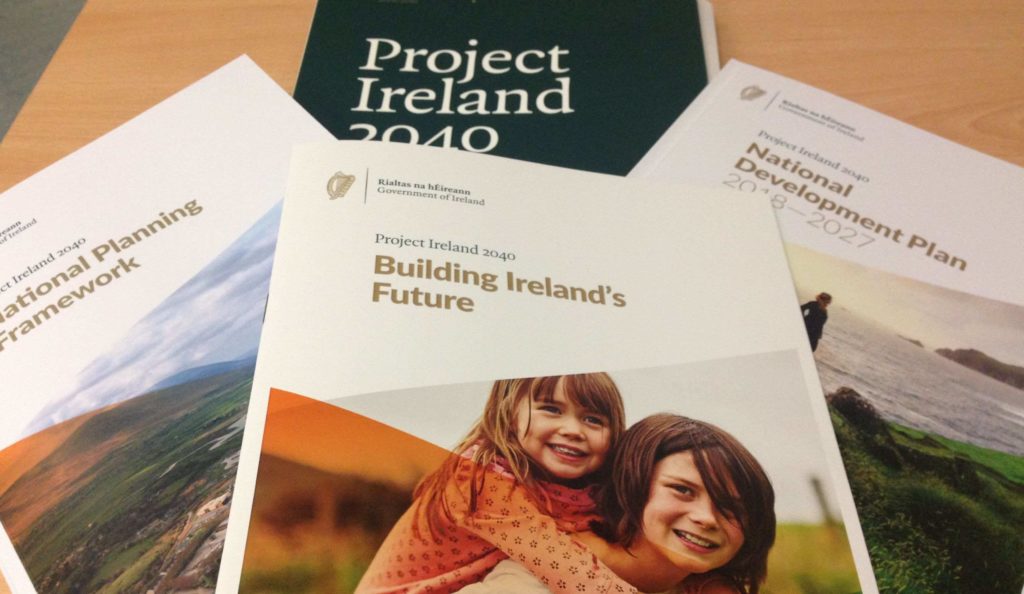
It’s glossy, it’s colourful, and it comes in three parts.
That’s the government’s 116bn euro plan announced in Sligo today.
It includes a 178-page document dealing with the so-called National Planning Framework, backed up by a 106-page document on the National Development Plan, which outlines investment needed.
There’s also a ten-page brochure entitled Building Ireland’s Future, which outline’s the government’s overarching policy on how it sees Ireland changing over the next 20 years.
The plan has 10 main priorities; they include transport and roads, the regions, rural communities, enterprise and innovation, connectivity which includes broadband, heritage, creating a low-carbon economy, and sustainable management of water.
Sligo is to be a regional capital of the north west.
There’s to be major investment in the region in roads and housing, with plans for more people and more jobs over the next 20 years.
The government says the starting point for the implementation of the National Development Plan is investment in infrastructure.
That envisages improved access to the regions, with a particular focus on the north west.
It says a particular priority is the Atlantic Corridor with a high quality road network linking Cork, Limerick, Galway and Sligo.
And it’s proposed that Letterkenny, with Derry City and Strabane, will be working as a cross-border city region.
The government says it’s planning for 160,000 to 180,000 more people in the northern and western region, bringing it to just over one million.
It also plans to have 450,000 people in employment in the north west, an increase of 115,000.
As well as infrastructure, there’s also major investment for housing and health.
Rural regeneration is a major aim of the plan, the objective being to see rural regions sustained as working and living economies.
There had been fears that there could be a clampdown on developments such as one-off rural housing.
However, the plan announced today insists future homes will be located in smaller towns, villages and rural areas, including the countryside.
But, significantly, it adds that it must be at what it calls ‘an appropriate scale.’ What that means exactly is something rural councillors throughout the region will be eager to know.
The plan envisages 4.5bn euro in regional and local roads, something that is extremely to all areas throughout the north west.
And it’s believed that the long-awaited Collooney to Castlebaldwin upgrade of the N4 in County Sligo is copperfastened in the plan.
Rural development is a major objective of this plan but in some rural areas, one of their traditional hubs, the post office, is uncertain. Examples are Easkey and Ballygawley in Co Sligo and Blacklion, Co Cavan.
These people from Easkey came to IT Sligo today with their message for the Taoiseach and the cabinet:
While there is much to contemplate in the plan announced today, it will also raise a multitude of questions when it comes to exactly how and when it will be implemented in the next two decades.
In the end, however, it will be judged by how it improves the day-to-day lives of the people and communities living in the north west.
Only then will we really know if today was a key date for the region, as the government politicians who came to Sligo today have claimed.







